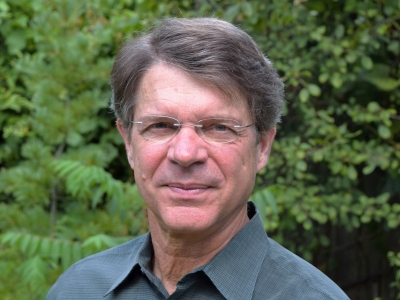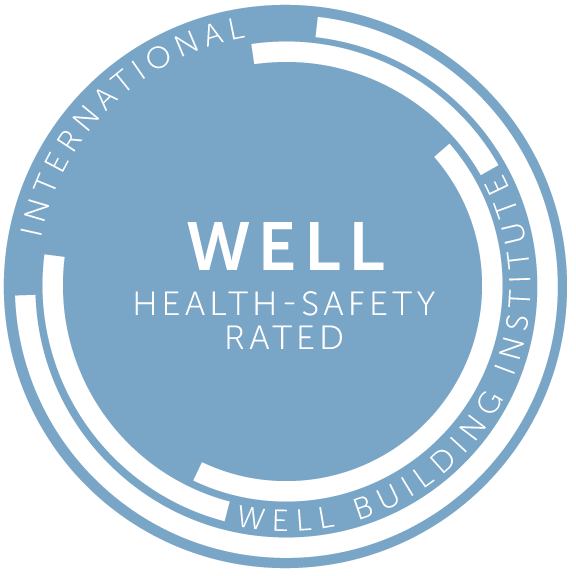The Red List: A Case for Healthy Building Products
Richard Piacentini, WELL AP | President and CEO, Phipps Conservatory and Botanical Gardens
Watch This Presentation:
Richard Piacentini, president and CEO of Phipps Conservatory and Botanical Gardens, discussed the challenges and successes the organization has experienced with the Red List in constructing certified Living Buildings.
The Living Building Challenge, the most rigorous green building standard in the world, requires several criteria, including self-sufficiency — for example, producing and using renewable energy on site — and being net-zero water.
“We thought the hardest challenge was going to be [getting to] net-zero energy,” said Mr. Piacentini, who serves on the board of the International Living Future Institute, which administers the Living Building Challenge. “We thought the other one that was going to be hard was the idea of being net-zero water — that the building has to capture its own rainwater on site and all the sanitary water that’s produced on site has to be treated there.”
“The hardest part was not energy or water — the hardest part was the requirements of not using toxic chemicals in any of the building products.”
The Phipps’ Center for Sustainable Landscapes, opened in 2012, is one of only a few buildings worldwide to meet all of the Living Building standards.
The Red List, a group of 22 classes of chemical compounds that are forbidden in a Living Building, includes formaldehyde, polyvinyl chloride (PVC), bisphenol A (BPA), volatile organic compounds (VOC) and more. The list directly addresses the often undisclosed, dangerous chemicals hidden in the building materials of modern homes, schools, hospitals and offices.
These are chemicals that can pollute the environment, hurt users, bio-accumulate up the food chain until they reach toxic concentrations, or harm construction and factory workers.
“The Living Building Challenge Red List looks at the whole route of exposure throughout the lifetime of that material,” Mr. Piacentini said. “What about the raw material extraction? What about the people who are manufacturing those products? Is it toxic to them?”
The list includes neurotoxins, carcinogens and endocrine disruptors, which play a role in a number of today’s increasing health problems, and also considers fenceline communities that exist near manufacturing facilities as well as what happens after the disposal of products containing Red List chemicals.
Locating and purchasing building materials without these compounds proved difficult, Mr. Piacentini said.
“When we started construction there was only one rug in the U.S. that was Red List free. Of all companies that make carpets in U.S., only one. Fortunately it came in a few colors, so we had some choices,” he said.
During the construction, Mr. Piacentini and his team never were able to locate a U.S.-made wooden door without formaldehyde.
“This was back in 2007 when we started the project, and we found that nobody wanted to talk to us about this,” he said. “I can now tell you we’re working on our third Living Building Challenge project, and it’s been a lot easier. I think manufacturers are starting to recognize that people are asking questions.”
In 2015, the Living Building Challenge began Declare, a program which encourages manufacturers to clearly label what’s in their products.
“It’s like an ingredient list for products, an endeavor to increase transparency in the marketplace,” Mr Piacentini said. “We need to get industry and chemists involved and to understand that there’s a market for doing things right.”
An International Living Building Institute office recently opened in Pittsburgh with a focus on working with manufacturers to responsibly retool existing products and develop new ones.
Mr. Piacentini has led the green transformation at Phipps since 1994. He holds a M.S. degree in botany, an M.B.A. and a B.S. degree in pharmacy. He is a registered pharmacist and a WELL® Accredited Professional.
Additional Resources:
- Presentation Slides (PDF)
- Center for Sustainable Landscapes — Phipps Conservatory and Botanical Gardens
- Living Building Basics — International Living Future Institute
- Materials Petal — International Living Future Institute
- Declare Products — International Living Future Institute
- Pittsburgh Living Product Hub — International Living Future Institute
- Living Product Expo 2018 — International Living Future Institute

About the Speaker
Since 1994, Richard Piacentini has led the green transformation of Phipps Conservatory and Botanical Gardens, including construction of the Center for Sustainable Landscapes, the only building in the world to meet Living Building Challenge™, LEED® Platinum, WELL™ Platinum, and SITES™ Platinum certifications. Richard is interested in the connection between people and plants particularly as it relates to human and environmental health. He has received numerous professional honors, including APGA, ILFI and USGBC leadership awards.
Select photos © Paul g. Wiegman




